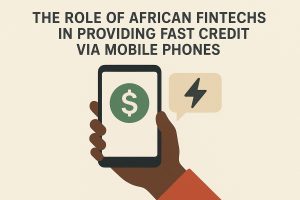Microcredit is emerging as a powerful tool to combat poverty and drive sustainable development across the African continent. By offering small-scale financial support to individuals often excluded from traditional banking systems, this model is enabling entrepreneurs, especially women, to start businesses, support their families, and reinvest in their communities.
The true value of microcredit lies not only in the money itself, but in the confidence it instills. For many, a loan as small as $50 can ignite a journey toward self-reliance. With minimal collateral requirements and community-based repayment systems, microcredit institutions are adapting to the realities of underserved regions in Africa, offering hope where there was previously stagnation.
Empowering Women and Strengthening Families

One of the most transformative aspects of microcredit is its impact on women. In many African cultures, women play a central role in maintaining household stability and child development, yet are often the least likely to access credit. Through microcredit, women can:
- Launch small businesses like tailoring, soap-making, or food stalls
- Generate steady income to support children’s education
- Build savings and reduce dependence on male-dominated income streams
These actions not only improve household resilience but also create ripple effects throughout the entire community. As women gain financial independence, they reinvest in healthcare, nutrition, and education—priorities that uplift future generations.
Fueling Entrepreneurship in Rural Areas
Rural populations, often disconnected from banking infrastructure, benefit significantly from microcredit programs tailored to local needs. These initiatives often combine small loans with training in financial literacy and business management, helping borrowers develop long-term strategies for growth. In villages where agriculture dominates the economy, microcredit enables farmers to:
- Purchase better seeds and fertilizers
- Rent equipment to improve efficiency
- Access markets previously beyond reach
By strengthening these small-scale enterprises, local economies grow more resilient. This reduces the need for migration and keeps families rooted in their communities. As opportunities increase locally, people feel empowered to invest where they live. In turn, this fosters deeper social ties and long-term development.
Community-Based Lending: A Model That Works
Many microcredit systems in Africa adopt group lending approaches, where small groups of borrowers support and guarantee each other. This model encourages accountability, reduces risk for lenders, and builds social cohesion.
Additionally, peer pressure within the group dynamic promotes timely repayments, maintaining the sustainability of the lending cycle. Community trust becomes the foundation upon which financial opportunity is built, reinforcing values of cooperation and mutual growth.
Overcoming Challenges and Ensuring Long-Term Impact
Despite its successes, microcredit is not a silver bullet, and its potential can be limited by various challenges. High interest rates may burden borrowers instead of empowering them, especially in vulnerable communities. A lack of proper regulation can lead to exploitation or unsustainable practices.Therefore, for microcredit to thrive in Africa, programs must:
- Balance accessibility with fair lending practices
- Offer continuous support and education to borrowers
- Foster partnerships with NGOs and local governments
These efforts ensure that microcredit remains a tool of empowerment rather than a source of debt. Long-term success depends on a holistic approach that integrates financial services with education, mentorship, and infrastructure development.
A Pathway Toward Inclusive Prosperity
Microcredit is more than a financial instrument—it’s a catalyst for social and economic transformation. Across Africa, stories of change are unfolding every day: women becoming business leaders, farmers innovating their practices, and children attending school thanks to steady income.
As these individual triumphs accumulate, they reshape entire communities. When people are trusted with opportunity, they respond with resilience, creativity, and ambition. That is the true power of microcredit: not just lending money, but unleashing potential where it’s most needed.




